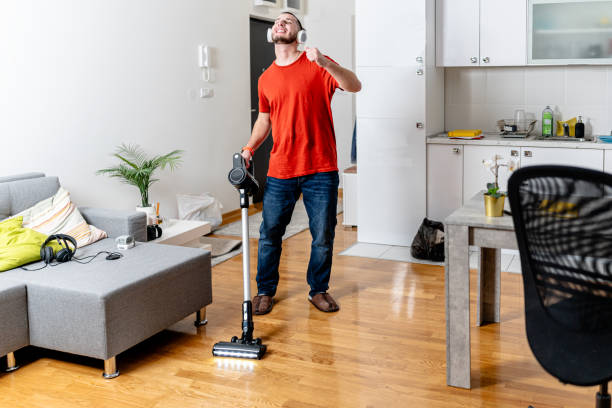How to Clean Your Vacuum for Optimal Suction: Step-by-Step Guide
If you’ve noticed that your vacuum isn’t picking up dirt and debris like it used to, it’s probably due for a thorough cleaning. Regular maintenance is essential for keeping your vacuum in top condition, ensuring that it continues to function effectively and efficiently. This article will guide you through the essential steps to clean your vacuum and restore its suction power, extending its lifespan and ensuring it operates at peak performance.
Why Regular Vacuum Cleaning is Important

Vacuum cleaners are an essential household tool, but they require regular maintenance to function optimally. Over time, dust, hair, and debris can clog filters and hoses, reducing the vacuum’s suction power. Without proper cleaning, this build-up can strain the motor, leading to decreased efficiency and potential mechanical failures. Regular cleaning not only improves suction but also prolongs the life of your vacuum, saving you money in the long run.
Preparing Your Vacuum Cleaner for Cleaning
Before you start cleaning your vacuum, it’s important to take a few preparatory steps. First, unplug the vacuum to ensure safety while you work. Next, gather all the necessary cleaning supplies, including a screwdriver, scissors, a damp cloth, and replacement filters if needed. Make sure you have a well-lit, spacious area to work in, as you’ll need to disassemble parts of the vacuum cleaner.
Cleaning the Filters
Filters are crucial components that trap dust and allergens, preventing them from recirculating into the air. Most vacuums have multiple filters, including a primary filter and a HEPA filter. To clean the filters, remove them from the vacuum and tap them gently to remove loose dirt. For washable filters, rinse them under running water and let them air dry completely before reinserting. Replace any disposable filters according to the manufacturer’s recommendations.
Clearing the Brush Roll
The brush roll of your vacuum collects a significant amount of hair, threads, and other debris, which can impede its rotation. To clean the brush roll, first remove it from the vacuum. Use scissors to cut away any tangles and a damp cloth to wipe off dust and grime. Once the brush roll is free of debris, reinstall it securely. Regularly cleaning the brush roll ensures that it spins freely and continues to effectively lift dirt from your floors.
Unclogging the Hoses
Clogs in the vacuum’s hoses can drastically reduce its suction power. To unclog the hose, detach it from the vacuum and inspect it for blockages. Use a long, flexible brush or a similar tool to push out any obstructions. Rinse the hose with water if necessary and let it dry completely before reattaching. Ensure all connections are tight to maintain the vacuum’s airtight seal.
Maintaining the Vacuum Bag or Dustbin
A full vacuum bag or dustbin can also hinder suction power. For vacuums with bags, replace the bag when it’s about two-thirds full. If your vacuum uses a dustbin, empty it after each use to prevent build-up. Clean the dustbin with a damp cloth to remove any lingering dust and debris. Keeping the dust collection system tidy ensures that your vacuum maintains strong suction and high performance.
Conclusion
Regular cleaning and maintenance of your vacuum cleaner are vital for preserving its suction power and overall performance. By following these steps—cleaning the filters, clearing the brush roll, unclogging the hoses, and maintaining the vacuum bag or dustbin—you can ensure that your vacuum continues to function efficiently, providing a cleaner, healthier home environment. Investing a little time in upkeep now can save you money and hassle in the future, prolonging the life of your valuable appliance.
FAQs
1. How often should I clean my vacuum?
It’s recommended to clean your vacuum every 1-3 months, depending on usage. More frequent cleaning may be necessary for homes with pets or heavy use.
2. Can I wash all vacuum filters?
No, not all vacuum filters are washable. Check the manufacturer’s instructions to determine if your vacuum’s filters can be washed or if they need to be replaced.
3. What should I do if my vacuum still has low suction after cleaning?
If your vacuum still has low suction after thorough cleaning, check for hidden clogs, ensure all parts are properly assembled, and verify that the vacuum’s motor is functioning correctly. If issues persist, consult a professional or the manufacturer.
4. Is it safe to use DIY cleaning solutions on my vacuum?
It’s best to use water and mild detergent when cleaning your vacuum. Avoid harsh chemicals as they may damage components. Always refer to the manufacturer’s guidelines.
5. How do I know when to replace the vacuum brush roll?
If the brush roll is significantly worn, has missing bristles, or doesn’t spin freely even after cleaning, it’s time to replace it. Regular inspection can help you stay ahead of wear and tear.
